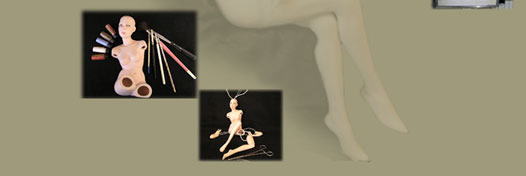
From
the original clay sculpture Catherine moulds these forms ,using
casting plaster to make multi piece slip cast moulds. Slip casting
refers to the porous plaster, when the liquid clay slip, is poured
into the hollow mould, the moister is draw out of the clay creating
a thin shell inside on the moulds surface. The excess liquid clay
is poured back out of the mould and a thin inner shell is left to
firm. When released from the mould and dried this shell is commonly
called green wear. Green wear has a chalky soft texture and must
be smoothed down to eliminate any imperfections. Once in the kiln
the wear may stay there for any thing up to 24 hours. Catherine
works exclusively with porcelain clay and this clay will require
the kiln reach above 1100 degrees to create the finished vitrified
porcelain. This is the most critical stage of the dolls evolution,
such extreme heat reduced the size of the green wear by approximately
12%. The wear is now called bisque and is prepared to receive one
of many coats of colour detail. To adhere the colour to the bisque
porcelain, a ground pigment and flux is applied and fired to 800
degrees in the kiln to melt the colour onto the surface of the work.
To complete the transformation. From parts to full figure, each
limb is attached to the body of the doll using elastic, enabling
the limbs to
be rotated for dressing and shipping.

